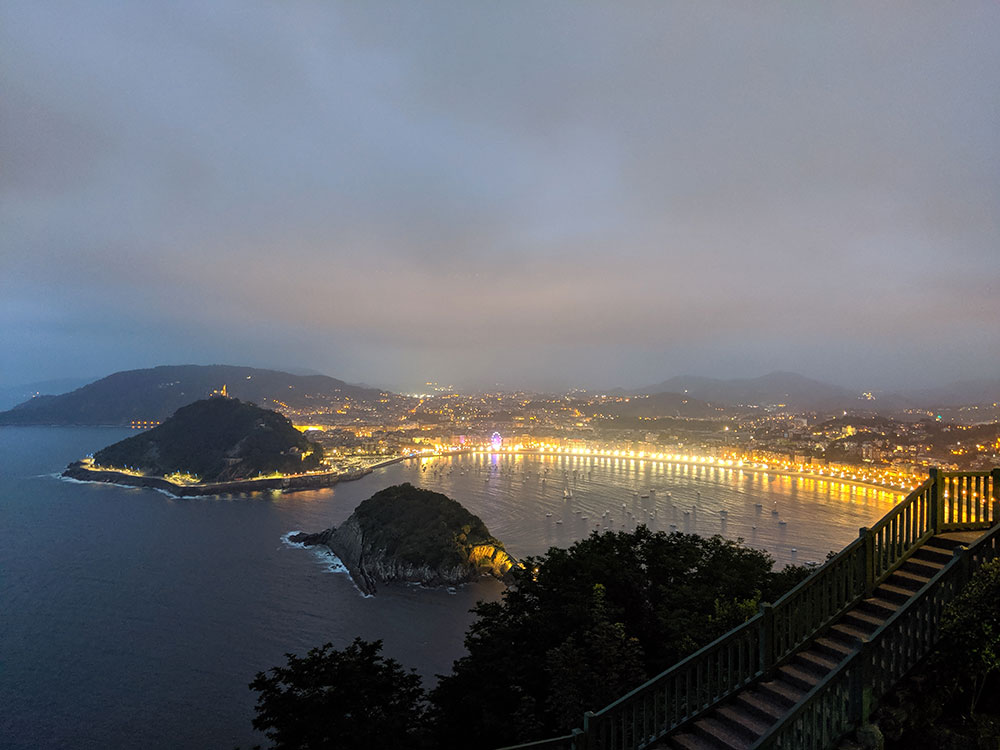The Basque Country, located west of the Pyrenees, covers some 21,000 square kilometres. Within that space, the region is blessed with incredible natural features, fascinating history, a unique culture and some amazing food.
But when planning a trip to the Basque Country, it can be difficult to decide where to go.
Whilst most people have probably heard of the most popular Basque Country cities, there are many other great places to explore.
In this article, we’ll run through the best areas that should be on your list for a trip to the Basque Country.
The three main cities in the Basque Country
We’ll start with the three most popular Basque Country cities on the Spanish side.
1. Bilbao
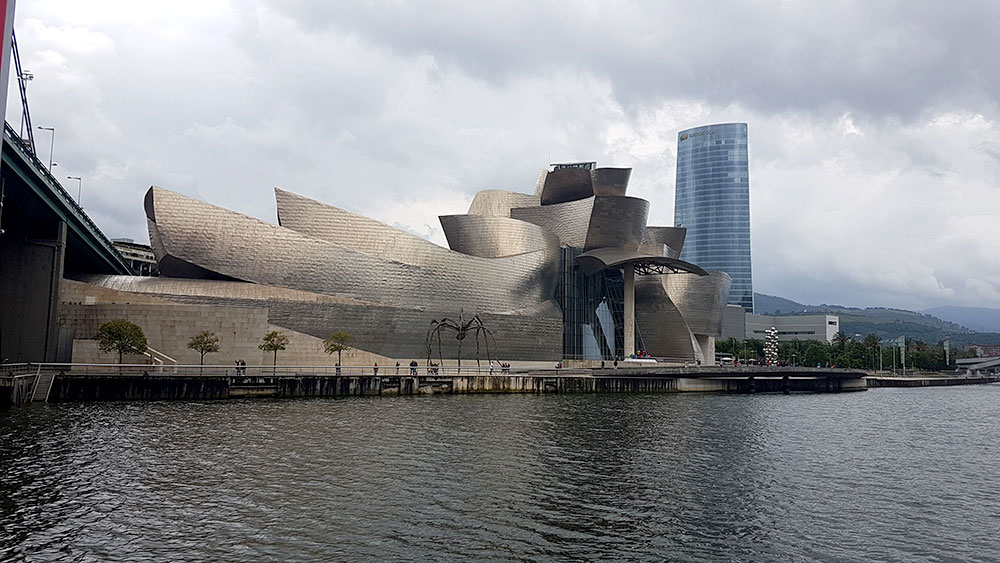
With a population of 350,000, Bilbao is the biggest city in the Basque Country and its “unofficial” capital.
It’s a big city, but has a charming small town feel, and there’s always plenty going on.
Bilbao has had a huge facelift in the past couple of decades and has transformed itself from a very industrial heritage to a city that won European city of the year in 2018!
Places like the transformation of Arenal on the banks of the River Nervión, the Casco Viejo, Ribeira Market and new San Mamés Stadium have all helped boost the city. But without doubt, the Guggenheim Museum has lifted Bilbao up a level.
Even if you’re not into art yourself, you can’t help but admire the incredible architecture of the building. Walking around the river and marvelling at the Guggenheim is top of the list of the things to do in Bilbao.
Away from the architecture and other areas of the city, there’s a big foodie culture in Bilbao. Whether it’s the pintxo culture of the Casco Viejo (Old Town) or trying your hand at one of Bilbao’s Michelin star restaurants, you’re bound to leave the city with a full stomach.
2. Donostia-San Sebastián
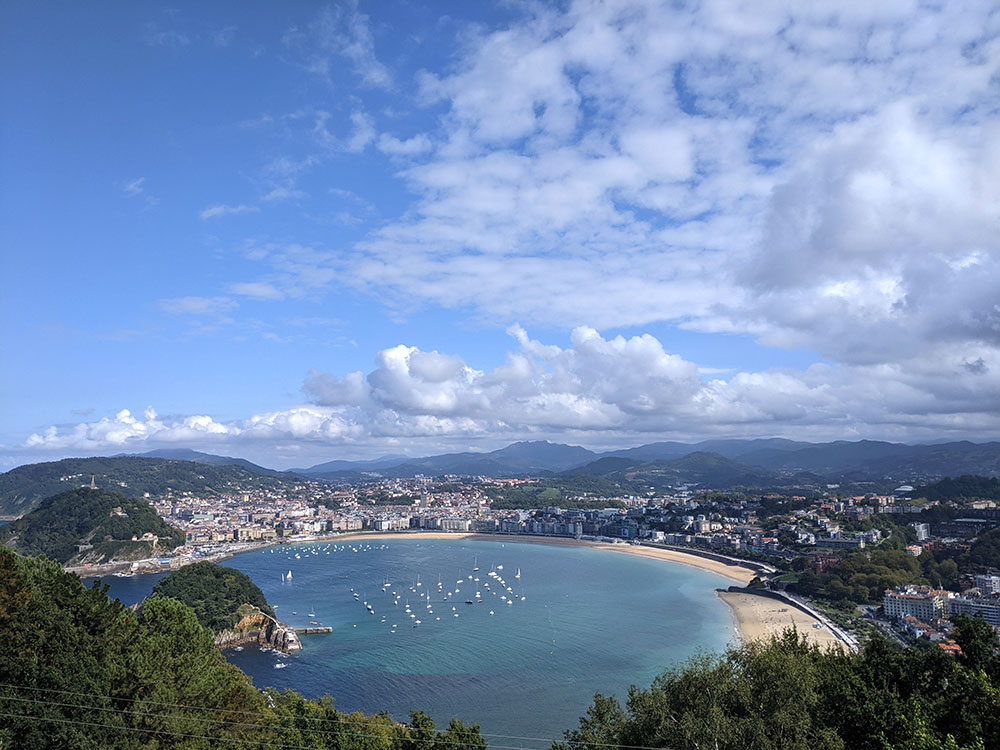
A little further along the coast (towards France), San Sebastian is the capital of the Gipuzkoa province of the Basque Country. It’s a smaller city than Bilbao, with just a population of just under 200,000.
But the city is packing a punch! San Sebastian has it all. And we’re not just saying that because we run a website about the city!
Donostia (as it’s known in Basque) has an interesting history, an abundance of culture, a vast International events calendar, beautiful architecture, three beaches and mountains.
But perhaps the best thing about San Sebastian is the food! The city is the unofficial European Capital of food, with no other place in Europe with more Michelin Star per square kilometre.
In 2016, the city was awarded the European Capital of Culture (along with Wrocław in Poland).
3. Vitoria-Gasteiz
Vitoria-Gasteiz is the capital of the Basque Country. But it’s often less popular with tourists than its sister cities Bilbao and San Sebastian.
OK, it may not have the Guggenheim Museum, or be as pretty as Donsotia, but you shouldn’t be so quick to overlook it!
With hot summers and cool winters, it’s a dynamic city, with a lot of things going for it. Ask any of its 250,000 residents, and you’ll discover that it’s often voted as one of the best places to live in Spain.
But it’s also a great place to visit.
In fact, thousands of tourists flock to Vitoria each year to attend one of the many music festivals held in the city throughout the year.
As a capital, the city itself has a lot of history including a well preserved mediaeval centre where many of the buildings date back to the 1500’s.
Other places worth visiting in the Basque Country
Whilst the three cities above are arguably the main highlights on a trip to the Basque Country, there are loads of beautiful small towns in the region.
The Basque Country has been blessed with the Cantanbrian coastline and many of these towns originally established themselves around the fishing industry. You can also head inland for a traditional Basque countryside town experience, which has a completely different feel.
4. Hondarribia

Hondarribia (or Fuenterrabia in Spanish) is a charming, quiet town. A place where you can enjoy a walk on the seafront, eat amazing food in one of its many restaurants or get lost in the history of the Old Quarter.
But it wasn’t always that way. Its strategic location at the Spanish-French border means that the town has played prominent roles in wars gone by.
And strangely enough, it’s that history that has made it one of the most beautiful towns in the whole of Spain.
Built as a stronghold, the mediaeval town has one of the best preserved fortified walls dating back to the 15th and 16th century. The walls protect the Old Quarter which is a mix of narrow cobbled streets and cute, well-kept old homes with colourful wooden balconies.
Being on the coast, as you wander out of the Old Quarter, you’re blessed with a beach at the seafront or the marina and port areas which make for a nice stroll, or a place to grab a bite to eat.
5. Getaria

For such a small town (with a population less than 3,000), Getaria has done a fair share to earn its spot on the global map.
A small, walled, mediaeval fisherman’s town, perhaps its biggest claim to fame is being the birthplace of Juan Sebastián Elcano who was the first person to successfully sail around the world.
Getaria was also the birthplace of Cristóbal Balenciaga. He famously went on to conquer the world of fashion with the “Balenciaga” brand.
Today though, Getaria is a charming fishing town. Its strong ties to the sea means that there’s some of the best seafood on offer here. Often chefs will cook fresh fish on the BBQs outside on the main street to entice hungry mouths into their restaurants.
And more often than not, the fresh seafood is accompanied by Txakoli. A special wine with a Destination of Origen in the geographical region of Gipuzkoa.
Getaria is set in an idyllic location with rolling mountains as a backdrop and a dynamic sea that has created spectacular eroded rock formations reminiscent of the flysch in Zumaia (see the next recommended town).
6. Zumaia

Zumaia is the perfect choice to visit for any Game of Thrones fans. Eager eyed viewers of the HBO series will recognise Zumaia as one of the filming locations for Dragonstone.
And there’s a good reason. The coastal town has some of the longest sets of continuous rock strava in the world (the Flysch) which has led the area being named a UNESCO Geopark.
The formations can be explored best from the central beach, Itzurun, or from the Algorri cliffs, both just a short walk from the town centre.
Aside from the coastline, there are some nice easy walks that can be done in the area for those who enjoy a little hiking.
Afterwards, you can reward yourself with some fine food in one of the many popular restaurants in the town.
7. Zarautz
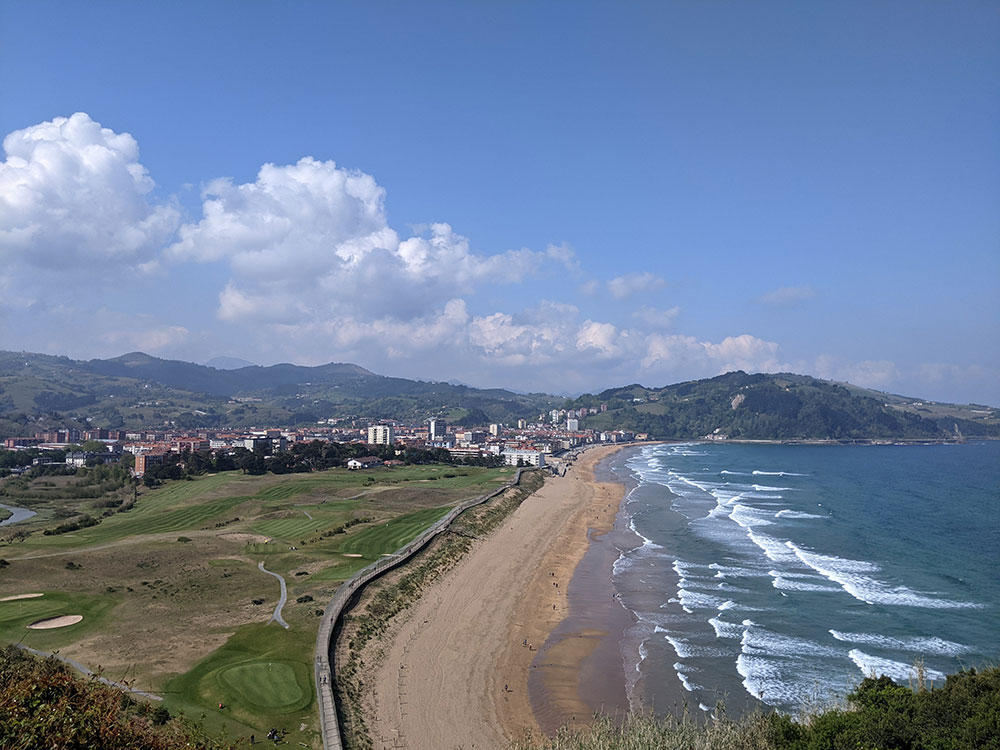
Zarautz is another town in Gipuzkoa with a worldwide reputation. It’s known as one of the best places to surf on the Canbrian coastline.
It goes without saying that its star attraction is the beach. Stretching 2.8km long with reliable waves all year round, it’s easy to see why people come from all over the world to visit Zarautz and try their hand at a bit of water sports.
But even if you don’t fancy getting wet, there’s plenty of reasons to come here.
There’s a very chilled, small town surfer vibe in the town with plenty of good drinking and eating spots. One of them (Hotel Restaurante Karlos Arguiñano) is owned by one of the most famous chefs in Spain, Karlos Arguiñano.
After you’ve divulged in food, the walk over to Getaria (#5 on our list) is a good way to walk this off. The road winds around the dynamic coastline and offers some spectacular views.
8. Tolosa
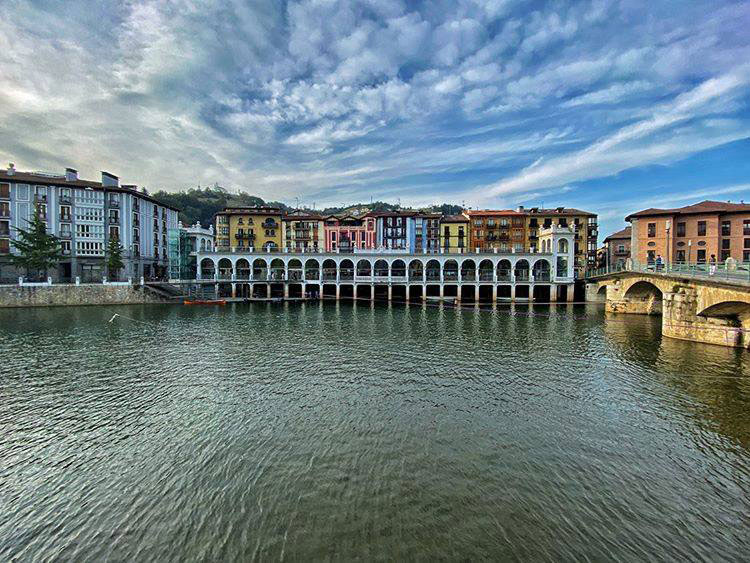
Tolosa is a small Basque town in Gipuzkoa, just over 30 minutes away from San Sebastian.
Historically, the location of Tolosa on the banks of the River Oria was previously seen as an important trade route for Gipuzkoa. It linked Navarra with the shipping ports on the Bay of Biscay.
Its strategic importance was even enough to earn the town the title of capital of Gipuzkoa. But its reign was short-lived. It was the capital of Gipuzkoa for 10 just years (from 1844 – 1854), before the title was handed back to San Sebastian.
Given its strategic importance, it’s a place with a glorious history. And today, the Old Town is a mix of narrow streets complete with buildings, monuments and many old plazas (squares) that are well worth exploring.
But arguably Tolosa’s most famous export are Tolosa beans!
They are a variety of pinto beans, with a dark purple colour. And Tolosanos (people from Tolosa) are extremely proud of them. Today, they are still grown in the traditional way in local farmhouses.
If you make the trip here, it’s worth trying them in one of the town’s many popular restaurants that serve Tolosa beans.
9. Mundaka
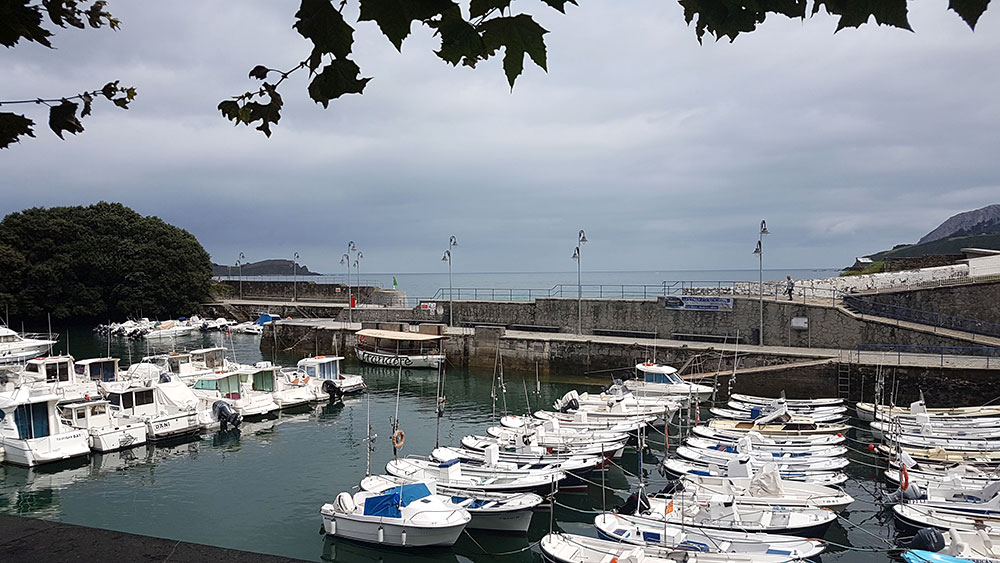
Mundaka is a charming little town set on the estuary of the Urdaibai River where it meets the Cantabrian Sea.
Given the town’s name literally means clean water (munda is “clean”and aqua “water” in latin), it’s no surprise that life here revolves around the water.
The port is at the heart of town. It’s where the cute colourful basque houses are, in an area that’s lined with bars and restaurants. In the summer, people cool off in the nearby water.
But arguably, the town is most famous amongst the surfers. That’s because Mundaka is home to one of the longest left-hand waves in the world. It reaches up to 4 metres in height and runs over 400 metres long, rising in the shape of a tube.
Whether you’re a surfer or not, the town is definitely worth a visit.
10. Bermeo
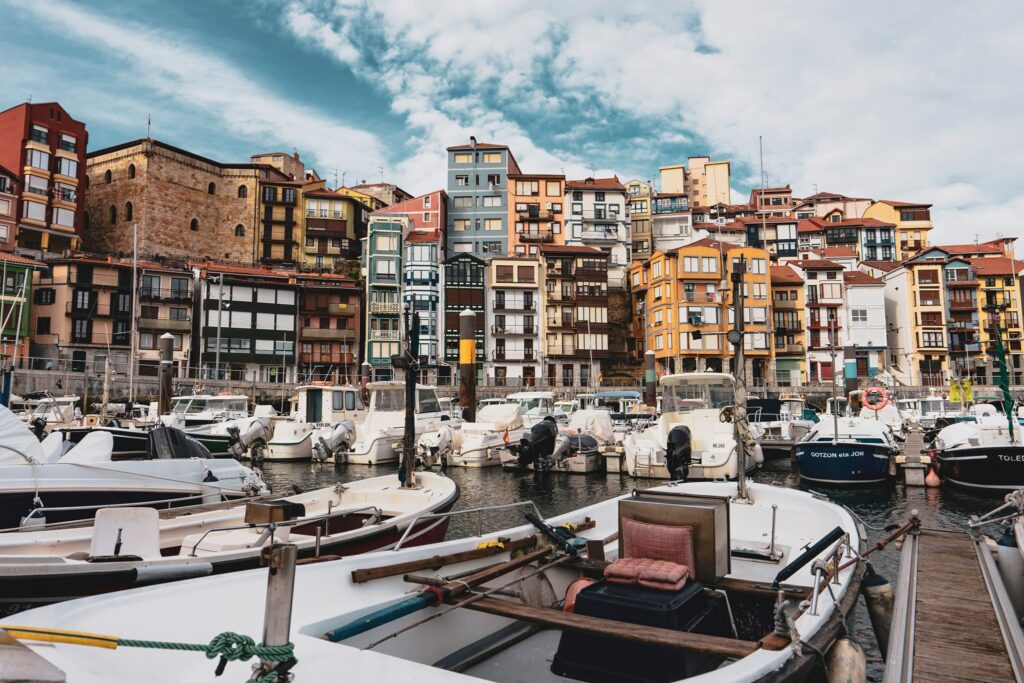
Just up the road from Mudaka, Bermeo is another beautiful coastal town located in the Urdaibai Biosphere Reserve. You can tick both towns off on a day trip from San Sebastian or Bilbao!
Traditionally, the town was one of the most important fishing ports in the Basque Country. And even today, it’s still one of the main drivers behind the town’s economy.
It’s the perfect place to stop for some seafood or take a walk by the marina and admire the colourful houses that overlook the water.
But in more recent years, the town has grown in popularity thanks to it also being the home of San Juan de Gaztelugatxe, famously the home of Dragonstone in Game of Thrones.
Whether you’re a GOT fan or not, it’s hard not to admire the impressive cliffs and rock formations that make up Gaztelugatxe and the surrounding areas.
